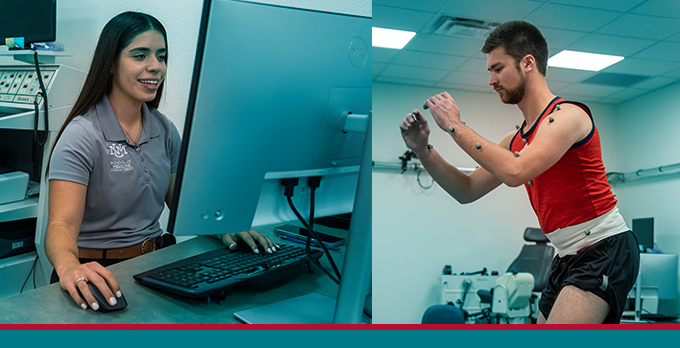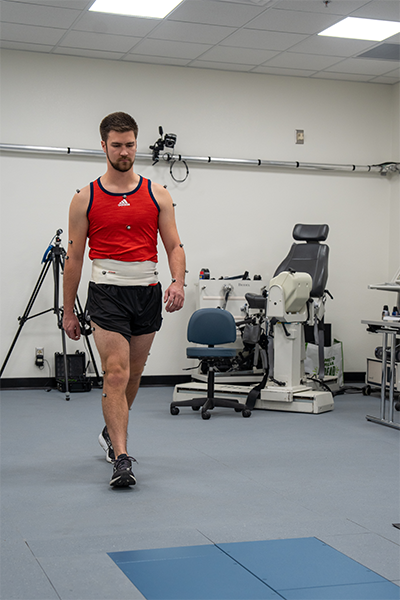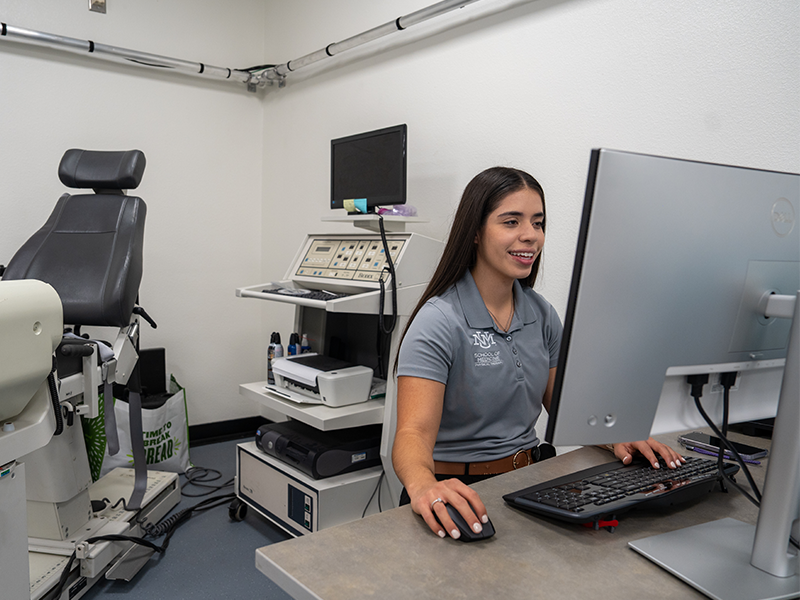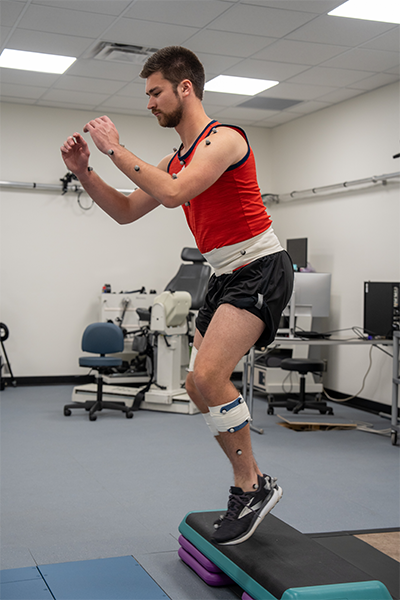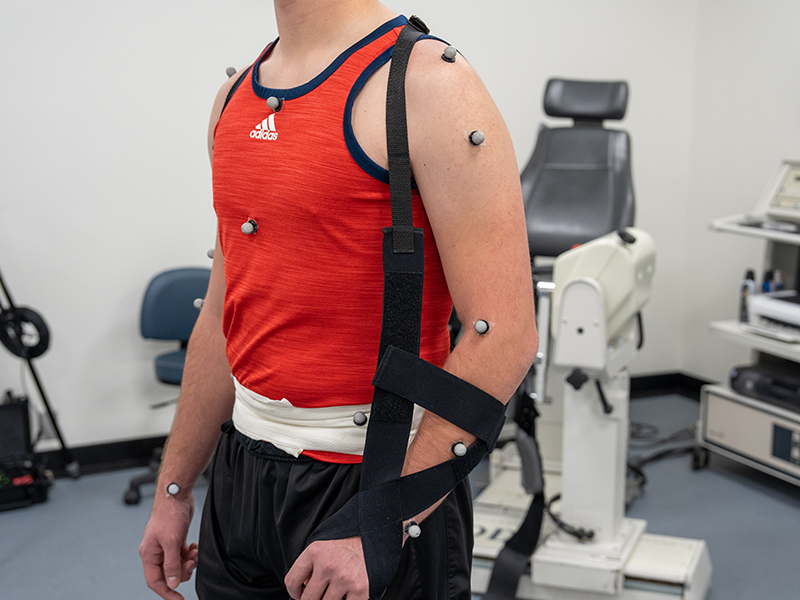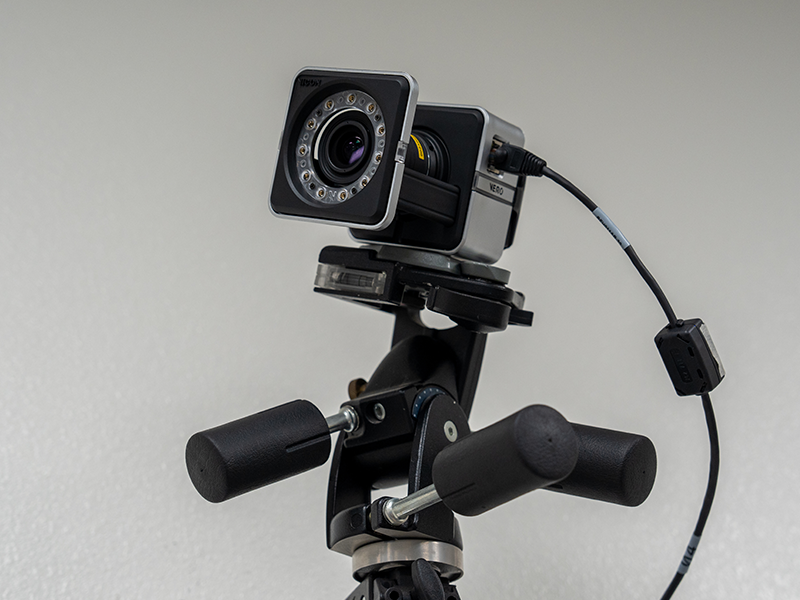A one-of-a kind lab is now open at The University of New Mexico, paving the way for new and innovative research in physical therapy that will improve patient care across the state.
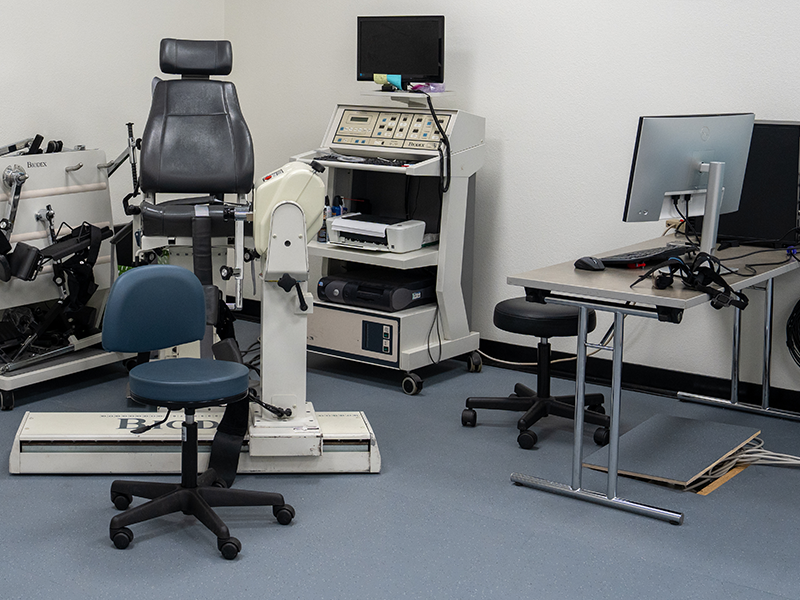 The newly-modernized Gait and Motion Analysis lab is part of UNM’s Physical Therapy Program within the UNM School of Medicine. The lab renovation comes as the program celebrates its 50th anniversary.
The newly-modernized Gait and Motion Analysis lab is part of UNM’s Physical Therapy Program within the UNM School of Medicine. The lab renovation comes as the program celebrates its 50th anniversary.
The Gait and Motion Analysis Lab conducts cutting-edge research focused on understanding how people move and walk. Using advanced technology including camera systems and various types of sensors, the lab tracks the movements of muscles, joints, and limbs to gather detailed data on walking mechanics. This research not only helps identify abnormalities but also contributes to developing better rehabilitation methods and tools.
The Gait and Motion Analysis Lab has been pivotal to the Physical Therapy program’s success and a cornerstone of its research. Beth Moody Jones, PT, DPT, EdD, MS, is Chief of the Physical Therapy Division of the Department of Orthopaedics and Rehabilitation in the UNM School of Medicine.

As a team, the Division of PT now averages over 12 peer-reviewed publications a year, close to 20 professional presentations both nationally and locally, and conducted research projects funded by grants.
“As a team, the Division of PT now averages over 12 peer-reviewed publications a year, close to 20 professional presentations both nationally and locally, and conducted research projects funded by grants,” Beth Moody Jones, PT, DPT, EdD, MS, Physical Therapy Division Chief, of Department of Orthopaedics and Rehabilitation, UNM School of Medicine.
Jones said the new state-of-the-art lab is a far cry from the Gait and Motion Analysis Lab’s humble beginnings.
“It actually started in a closet in the first Domenici Building, which is now where the cafeteria is. We had classroom space down there and across from our classroom was just a storage closet that wasn't being utilized,” Jones said.
The next move for the lab was to a designated space in the UNM Health Science and Services Building (HSSB) where the focus became research. The new lab is now located on the first floor of HSSB. In addition to having more space for faculty research, the lab will continue to increase research learning experiences for students. Physical Therapy students take part in faculty-led research projects to learn how to gather, export, analyze and report data. The lab is also used by undergraduate and graduate School of Medicine students, medical residents and UNM students studying engineering, statistics, and exercise science.
The lab's modernization was made possible through a federal Health Resources and Services Administration grant, which allowed for significant renovations, including new cameras and the installation of advanced equipment like the Zeno Walkway. This mat provides critical data on gait and safety, which Jones said is invaluable in research.
“We conducted a study examining how restricting arm motion affects walking and balance function in healthy older adults,” Jones said. “Participants wore a variety of arm braces commonly used following injury or surgical procedures while the motion capture system recorded joint movement and forces.”
By using the motion analysis system, researchers were able to record unique movement patterns and forces that are otherwise unobservable in a clinical setting.
“The investigators found that certain parameters of balance and walking were affected by restricting arm motion and may increase their fall risk,” Jones said.
She said there’s a plan to expand this line of research to older adults following arm restriction due to injury or surgical procedures to determine any additional fall risk. This research will be helpful in designing appropriate interventions in the future.
Jones added that the Gait and Motion Analysis Lab’s expansion is not just a technological upgrade; it also represents a broader evolution in the field of physical therapy.
"Physical therapy has undergone so many changes," said Jones, who has served at UNM since 2003 and has been a physical therapist for 42 years. "When I started most physical therapists were under the direction and supervision of a physician. We've gone from that to being a doctor of physical therapy with full autonomy to evaluate and treat, and we are the musculoskeletal experts.”
As the Physical Therapy program at UNM celebrates its 50th anniversary this year, it continues to evolve, much like the field itself. Founded in 1974 as a bachelor’s degree program with just a few faculty members, it has grown into a robust doctoral program with 11 full-time faculty members and a new class of 33 students this year. The program has graduated nearly 1,200 students, many of whom practice in New Mexico, contributing to the state's health care landscape.
"When we started this program, there were less than 50 physical therapists in the state," Jones said. "Now, there’s close to 2,000 in the state, and the majority have some connection to our program.”
